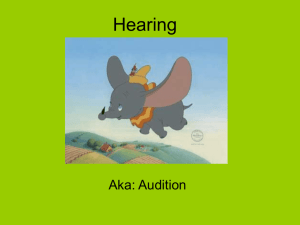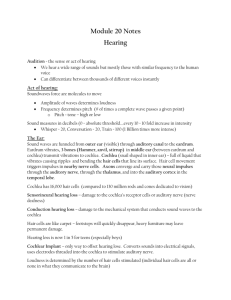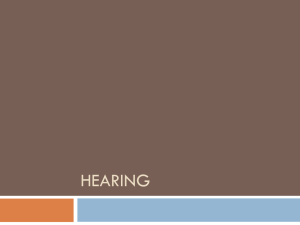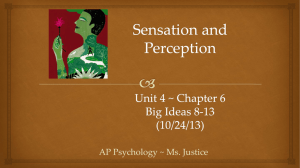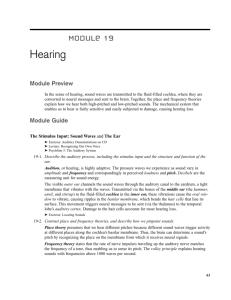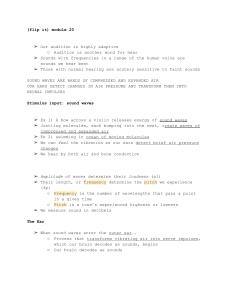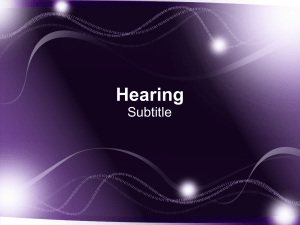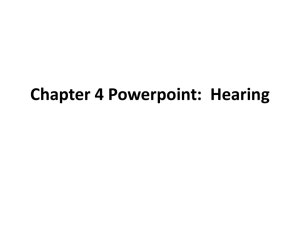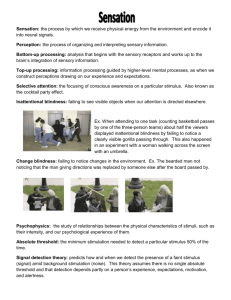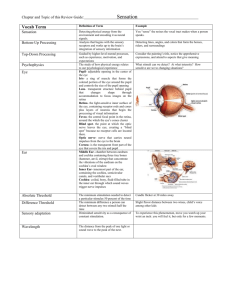A.P. Psychology 4 (D)
advertisement
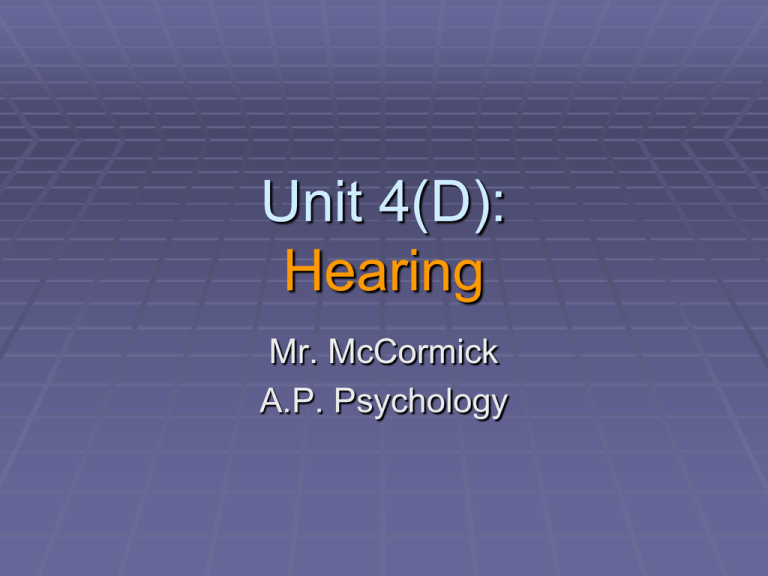
Unit 4(D): Hearing Mr. McCormick A.P. Psychology Do-Now (Discussion) Why does one’s voice sound so different when it is recorded and played back? Hearing Audition: The sense or act of hearing The Stimulus Input: Sound Waves Sound waves are compressing and expanding air molecules Frequency: The number of complete wavelengths that pass a point in a given time (for example, per second) Pitch: A tone’s experienced highness or lowness The Stimulus Input: Sound Waves Amplitude: The height of a sound wave Measures the energy/intensity of the wave Loudness Measured in decibels Typical Decibel Levels Loudness of Sound 120dB 70dB The Ear The Cochlea Perceiving Pitch Place Theory: Links the pitch we hear with the place where the cochlea’s membrane is stimulated Different frequencies vibrate in different places of the cochlea Problem: low-pitched sounds not localized Frequency Theory: The rate of nerve impulses traveling up the auditory nerve matches the frequency of a tone, enabling us to sense its pitch The entire cochlea is believed to vibrate at a particular frequency Problem: high-pitched sounds (1,000 waves/second) travel faster than neurons Locating Sounds Because we have two ears, sounds that reach one ear faster than the other ear cause us to localize the sound. Locating Sounds Why is it difficult to locate a sound when it occurs directly ahead, behind, overhead, or beneath us? It is easier to locate a sound when it comes from either side of us; for this reason, to pinpoint a sound, we often need to cock our head, allowing each ear to receive a slightly different message. Hearing Loss and Deaf Culture Conduction Hearing Loss: Caused by damage to the mechanical system that conducts sound waves to the cochlea E.g. punctured eardrum Sensorineural Hearing Loss: Caused by damage to the cochlea’s receptor cells or to the auditory nerves “Nerve Deafness” Biological changes associated with heredity, aging, and prolonged exposure to ear-splitting noise or music Hearing Loss and Deaf Culture Cochlear Implant: A device for converting sounds into electrical signals and stimulating the auditory nerve through electrodes threaded into the cochlea Hearing Loss and Deaf Culture What are the benefits and limitations of using sign language exclusively in a hearing world? What should the hearing world’s response be to the use of sign language? Review What is determined by the frequency of a sound? The amplitude? Discuss the path in which sound travels between entering the ear and reaching the brain. How do we locate sounds? What is the difference between Conduction and Sensorineural Hearing Loss? Homework Unit 4 FRQ Unit 4 Quiz: “Sensation and Perception” Unit 4 Test: “Sensation and Perception” Chapter 5 Outline: “States of Consciousness”
